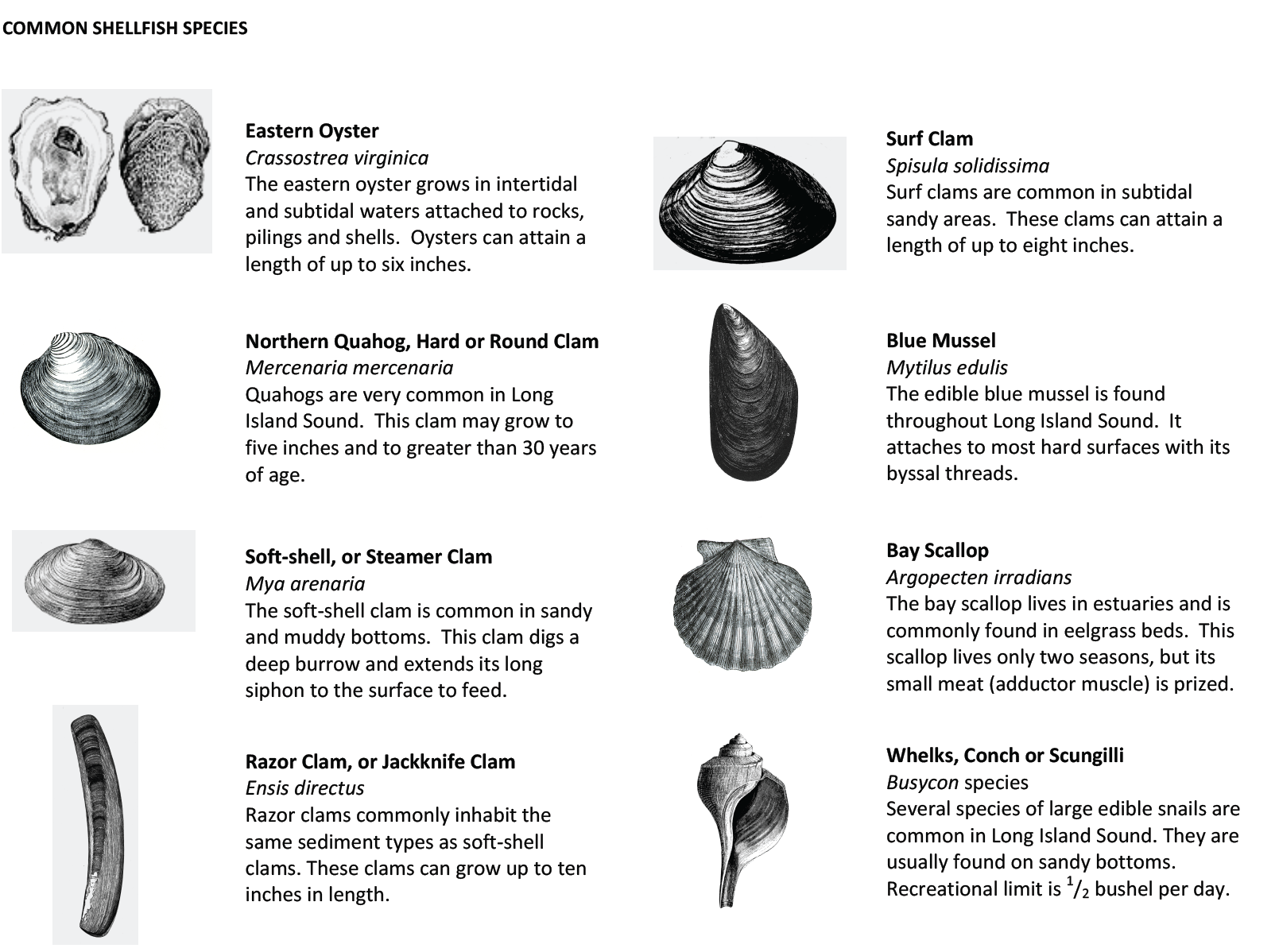Recreational Shellfishing
Connecticut Sea Grant has produced a recreational shellfishing guide for the public. Permit fees, shellfish size and daily limit restrictions, and contact information are included in the guide. Always check that recreational areas are open prior to harvesting shellfish by calling the town hotline.Harvesting is limited to "Approved" and "Conditionally Approved-Open" areas, excluding franchised or leased shellfish beds. Recreational shellfishing in closed areas (Conditionally Approved-Closed, Restricted, and Prohibited areas), whether for bait or personal consumption, is illegal. Individuals involved in such illegal activities are subject to fines and imprisonment, as well as putting their health in jeopardy. Maps of recreational shellfishing areas are available for download. No freshwater areas have been classified Approved or Conditionally Approved for the taking of any species of freshwater shellfish.
Read the Connecticut SeaGrant Report, which found that the recreational shellfishing sector has a more than $1.6 million annual economic impact on the state's economy.
Recreational shellfish are intended to be consumed by the harvester and family members. Recreational harvesters cannot offer their shellfish for sale or barter. Recreational harvesters must take care to properly handle their catch. See the Storage and Handling guidance page for more information.
Please be advised that consuming raw or undercooked shellfish, meats, or eggs may increase your risk of food borne illness, especially if you have certain medical conditions. Harvesting restrictions.
Obtain the appropriate permits prior to recreationally harvesting shellfish, and follow the shellfish size and daily limit restrictions, which vary by town.
Implements to take shellfish, such as rakes or tongs, must have openings or spacing between the teeth or prongs of one (1") inch or greater. Carry the appropriate size shellfish ring, slot, or gauge while harvesting, as size limits are established to support viable shellfish populations.

In the interest of preventing the growth of non-indigenous species, disease and parasites, no shellfish taken from or originating from areas outside of Connecticut's Long Island Sound may be placed, planted or disposed of in Long Island Sound and its tributaries without the written approval of the Connecticut Department of Agriculture, Bureau of Aquaculture.

